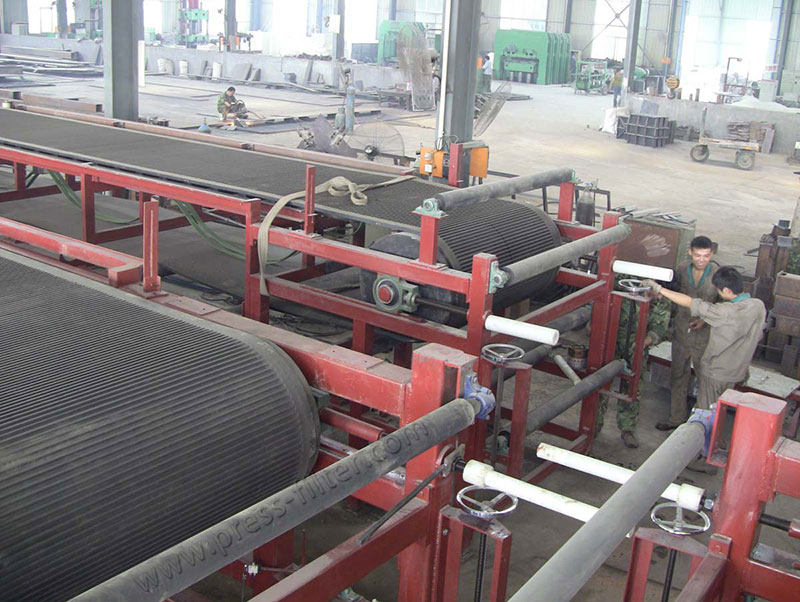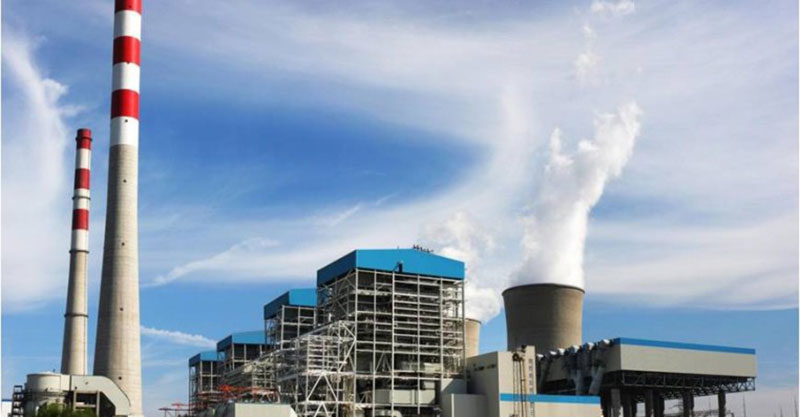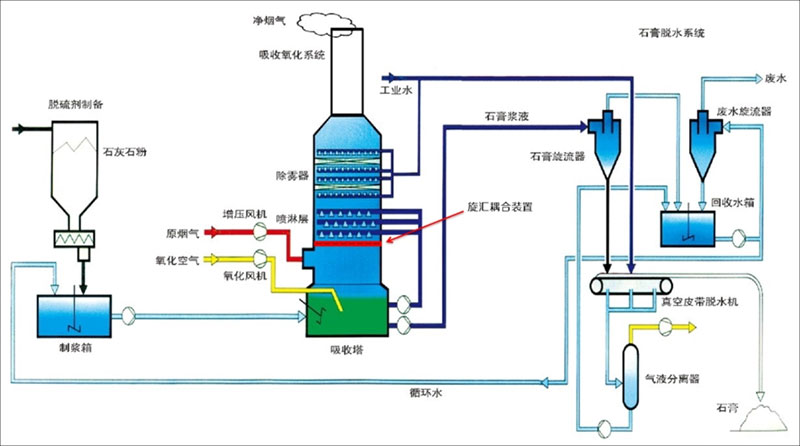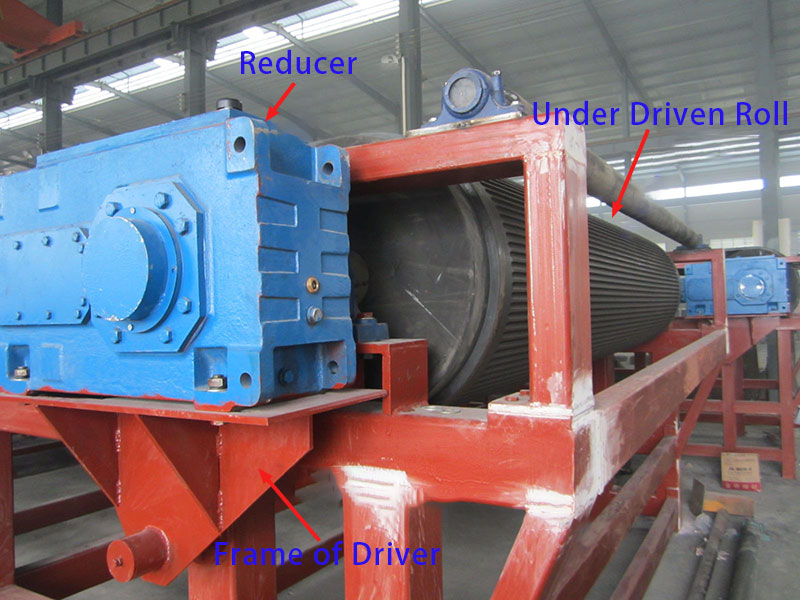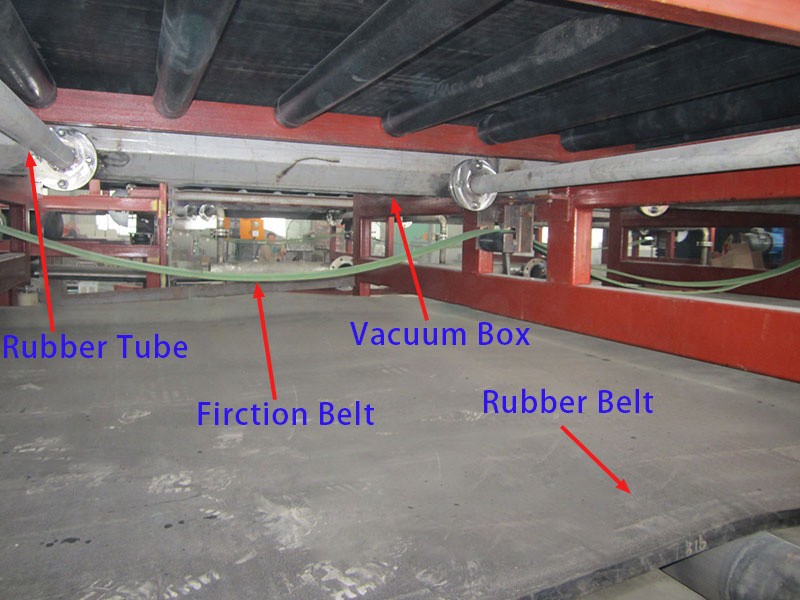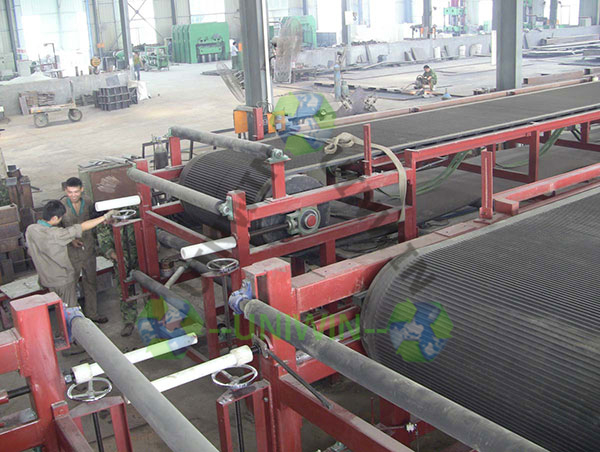Application of Vacuum Belt Filter in Flue Gas Desulfurization
Flue gas desulfurization is the process of removing sulfur dioxide from fossil fuel power plants before they are emitted into the atmosphere. Sulfur dioxide (SO2) is a major atmospheric pollutant. Its excessive emission can lead to the formation of acid rain, which will have serious impacts on soil, water sources, and vegetation.
In order to reduce the mass concentration of SO2 in the discharged flue gas, most coal-fired power plants are equipped with flue gas desulfurization systems. According to different desulfurization principles, desulfurization technology can be divided into dry flue gas desulfurization, semi-dry flue gas desulfurization, and wet flue gas desulfurization. Among them, the application of vacuum belt filter is very important, especially in wet flue gas desulfurization system. Because it can effectively filter and process desulfurization by-products. Vacuum filter is most suitable for wastewater treatment in thermal power plants.
What is Wet Flue Gas Desulfurization?
Wet flue gas desulfurization (WFGD) is a process widely used to remove sulfur dioxide from the exhaust gases of fossil fuel power plants and other sulfur oxide-emitting processes. The method is so effective that it can remove up to 99% of sulfur dioxide from flue gases, significantly reducing the environmental impact of these emissions.
The core of the WFGD process is the absorption of SO2 in the flue gas into a liquid solvent. The most commonly used solvent is a suspension of limestone (calcium carbonate) in water, known as limestone slurry.
Wet Flue Gas Desulfurization Process Flow Diagram
Vacuum Belt Filter Working Principle
- The vacuum belt filter is a high-efficiency and continuously operating solid-liquid separation equipment. Its main function is to separate materials with high solid content through the filter cloth under the action of vacuum suction to achieve solid-liquid phase separation.
The working principle of the horizontal vacuum belt filter is to use filter cloth as the filter media. The motor drives the endless belt to run continuously through the belt-driving roller. The filter cloth is spread on the filter belts and runs synchronously with it under the action of friction and vacuum suction.
- The annular belt is in contact with the vacuum slide table. There is a friction belt between the filter belt and the slide table. Below the slide table is a vacuum box and the side of the vacuum box is connected with pipes leading to the vacuum system.
- The material is evenly distributed on the filter cloth by the distributor. When the vacuum pump is running, a vacuum filtration area is formed on the tape. The filtrate passes through the filter cloth and enters the vacuum chamber through the collecting pipe below. The liquid entering the vacuum chamber is separated by gas and water.
- The solid particles form filter cakes on the filter cloth. With the transmission of the rubber belt, the filter cake is removed under the action of the scraper. After cleaning, the filter cloth re-enters the next filtration cycle.
Vacuum Belt Filter Application in Flue Gas Desulfurization
The flue gas drawn from the main flue behind the boiler-induced draft fan is boosted by the booster fan and enters the absorption tower. The limestone slurry is sent from the lower part of the absorption tower to the upper spray system through the circulation pump. It reacts chemically with the flue gas in the reverse direction to absorb the sulfur dioxide in the flue gas. In the circulating slurry tank of the absorption tower, oxidizing air is used to oxidize calcium sulfite into stable gypsum. The clean flue gas is discharged into the atmosphere from the chimney after the water mist is removed by the demister.
The gypsum slurry in the absorption tower is concentrated and then flows directly into the vacuum belt filter press. The surface moisture content of the gypsum slurry entering the vacuum belt filter is less than 10% after dehydration treatment and is sent to the gypsum storage room by the belt conveyor for storage. During the gypsum dehydration process, the gypsum and filter cloth are cleaned. The filtrate of the vacuum belt filter is collected in the filtrate box, and together with the overflow slurry from the gypsum cyclone station, it forms reused water and is returned to the system for recycling.
Advantages of Vacuum Belt Filter in Flue Gas Desulfurization Applications
- The high efficiency and reliability of vacuum belt machines enable continuous operation without the need for extensive downtime.
- It is also designed to minimize operating costs by reducing energy consumption and maintenance requirements.
- Environmentally, these systems significantly reduce sulfur dioxide emissions, help clean the air, and prevent acid rain.
- In addition, the by-products produced by the process can be recycled, saving resources.
Conclusion
Vacuum belt filters play a crucial role in flue gas desulfurization, offering a highly efficient and cost-effective solution for reducing sulfur dioxide emissions from industrial sources. Uniwin as one of the belt filter press manufacturers, has a vacuum belt filter of various specifications for sale. We can also customize it according to your requirements. Please contact us if you have any needs.

